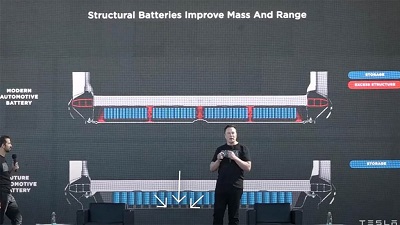The problem facing Bolloré’s solid-state batteries is exactly what all solid-state battery manufacturers need to tackle:
the difference between the inside and outside of the laboratory.
In November of this year, QuantumScape, an American solid-state battery startup with a market value exceeding Ford Motor’s, announced that the battery cell prototype maintained more than 80% of its initial capacity after 800 cycles (100% depth of discharge).
However, investment research website Seeking Alpha stated in a public report that QuantumScape’s batteries are “too small and have never been tested outside the laboratory.”
Seeking Alpha believes that it is very, very difficult for solid-state batteries to achieve the required magnification and temperature functions in real scenes outside the laboratory, so difficult that no one has ever done it. “They may never reach the advertised performance.” Seeking Alpha said.
QuantumScape founder and CEO Jagdeep Singh countered this, saying, “Seeking Alpha’s report reads like it was written by someone who knows nothing about batteries.”

So, what are the core factors that keep solid-state batteries in the scientific research stage for a long time and stand outside the door of commercial mass production?
Returning to the essence of solid-state batteries-solid electrolytes, can get rid of the fog.
There are currently three mainstream systems of solid electrolyte materials: polymers, oxides and sulfides.
These are three material routes with completely different beliefs. European and American companies choose oxide and polymer systems, while Japanese and Korean companies prefer sulfide systems.
The advantage of the polymer system is that the high temperature ion conductivity is high, which is convenient for processing. But its ionic conductivity is extremely low at room temperature, which greatly restricts its development breadth.
The French Bolloré solid-state battery is the product of the polymer system. An absurd event is that, in order to allow its electric cars to work normally at room temperature, Bolloré Group deliberately equipped each car with a heater, and heated the battery system to 60 to 80°C before starting. The heater cannot be offline for a long time and the technology at that time cannot realize the remote start-up in advance.
The advantage of the oxide system is that it has good overall performance. Among them, thin-film products have strict requirements on process technology, cost and large-scale production are very difficult, and they are not suitable for electric vehicles with huge production capacity. Non-film products are currently the hottest electric vehicle battery solutions, QuantumScape is a faithful believer in this route.
The advantage of the sulfide system is that it has an ionic conductivity comparable to that of a liquid electrolyte, and has a high support for fast charging. It is the winner of whether electric vehicles can quickly replace fuel vehicles.
It is the selected technical route of Japanese and Korean companies including Toyota, Honda, Samsung and Chinese battery giant CATL. However, the progress of the development of the sulfide system is at the elementory level, and the risk of not being able to be commercialized and mass-produced is also the highest.
Liquid lithium-ion batteries, as the main promoter of development in the contemporary world, have not substantially changed the scientific principles from when they appeared. The appearance of solid-state batteries has shaken its unshakable foundation. The only thing that bothers it is mass production.
“Change lanes and overtake” or “failure” ?
American and Japanese companies hope to skip the current stage and have spent a lot of money on another track: solid-state batteries.
In response to the rise of the battery industry in China and South Korea, Japan has been making national efforts to develop the next generation of solid-state batteries since 2017, and has invested a lot of R&D funds. The United States and Europe are also working hard to develop a new generation of solid-state batteries to achieve surpass. Although China & Korea’s battery industry has achieved temporary advantages, international competition pressure is huge, and it needs to make every effort to catch up with the cutting-edge technology of solid-state batteries.
Japan and other countries are vigorously developing the next generation of all-solid-state batteries. In this regard, Chinese manufacturers still have a gap. All-solid-state battery technology must be industrialized and have an important impact on the market structure. It is estimated that it will take about 10 years.
The industry predicts that by 2025, there will be a first-generation all-solid-state battery with a specific energy roughly equivalent to that of existing liquid electrolyte lithium-ion batteries. After 2030, there will be a second generation of all-solid-state batteries using new positive and negative materials. The specific energy will increase to 500 watt-hours per kilogram. There will also be high specific energy lithium-sulfur batteries and metal-air batteries.
Existing lithium-ion batteries, including solid-liquid hybrid lithium-ion batteries, will still be absolutely dominant before 2030. During 2017-2025, the global solid-state battery market will grow at a compound annual growth rate of 72.33%.
For any car company and solid-state battery manufacturer, this is a window of opportunity that should not be missed, nor should it be missed. The market has already buried the potential, and now it is the critical moment to test wisdom.
-End-





